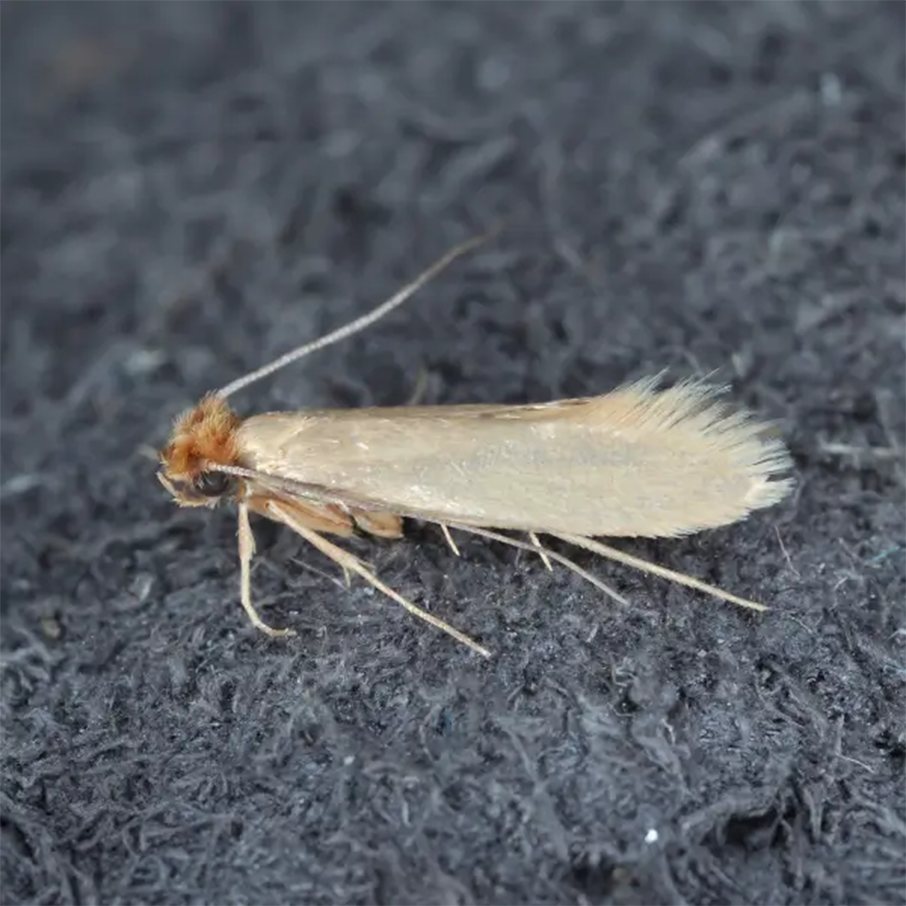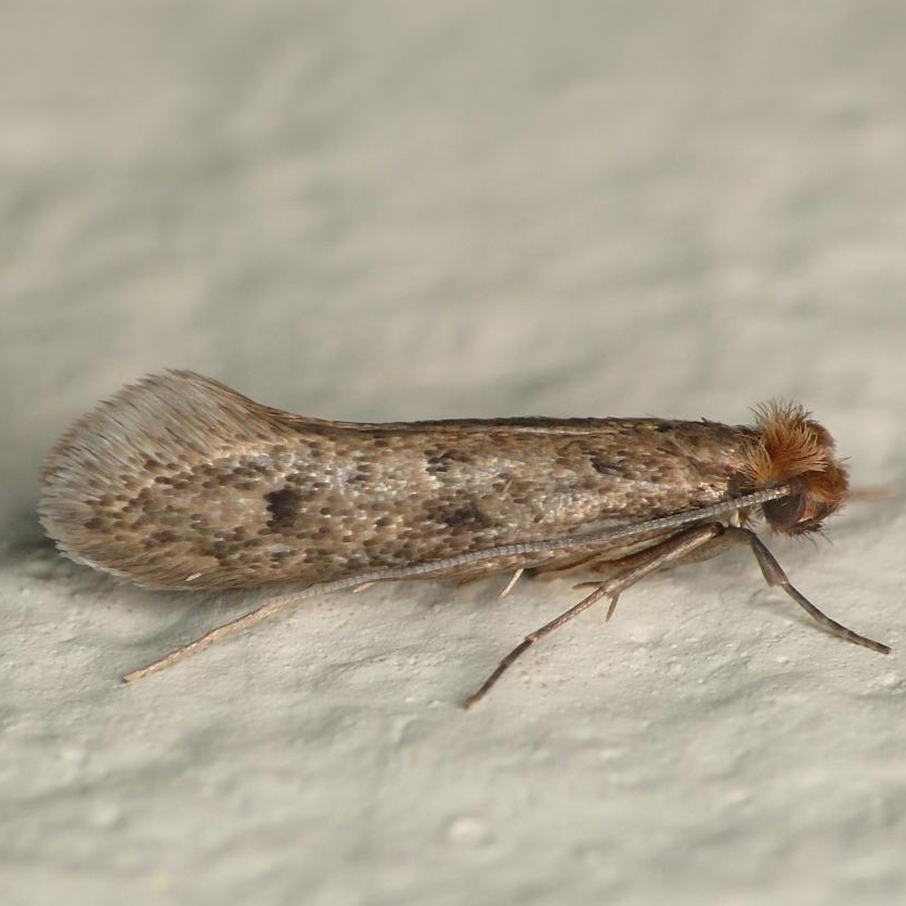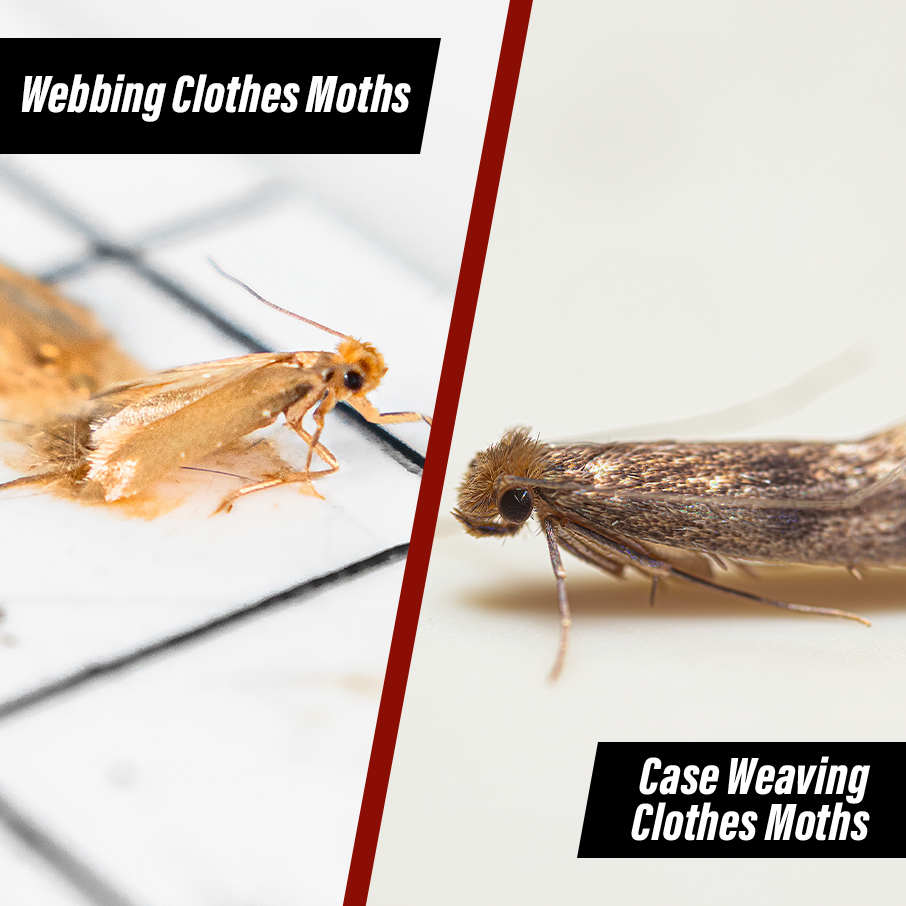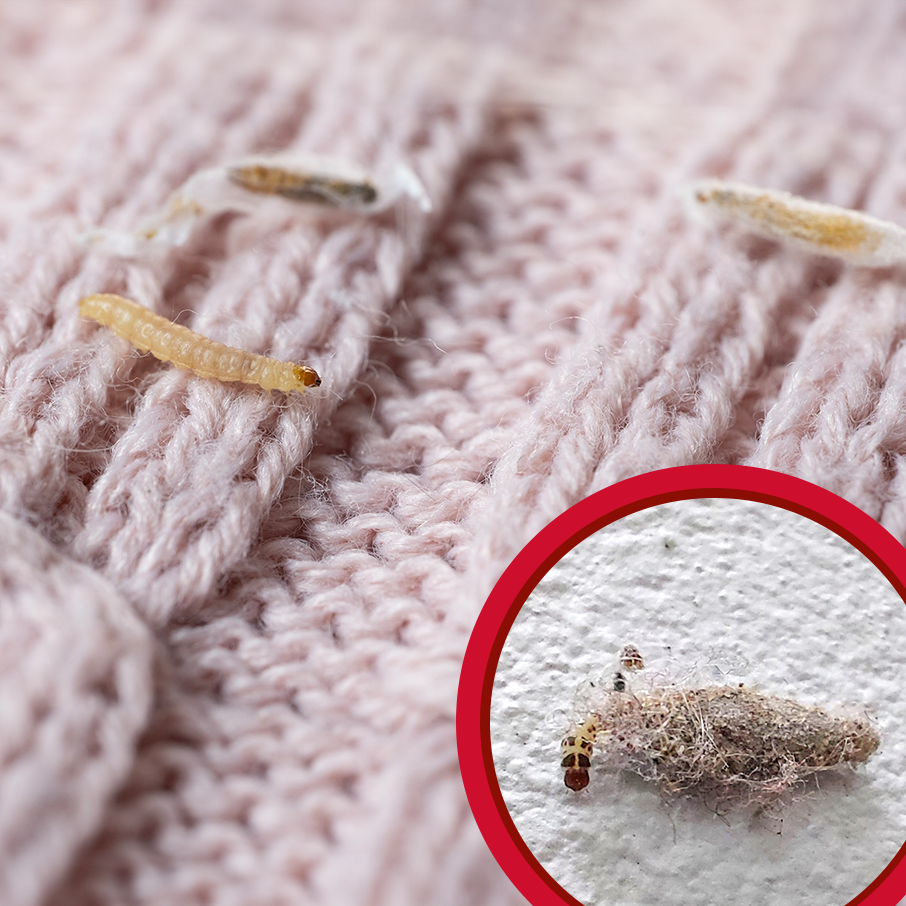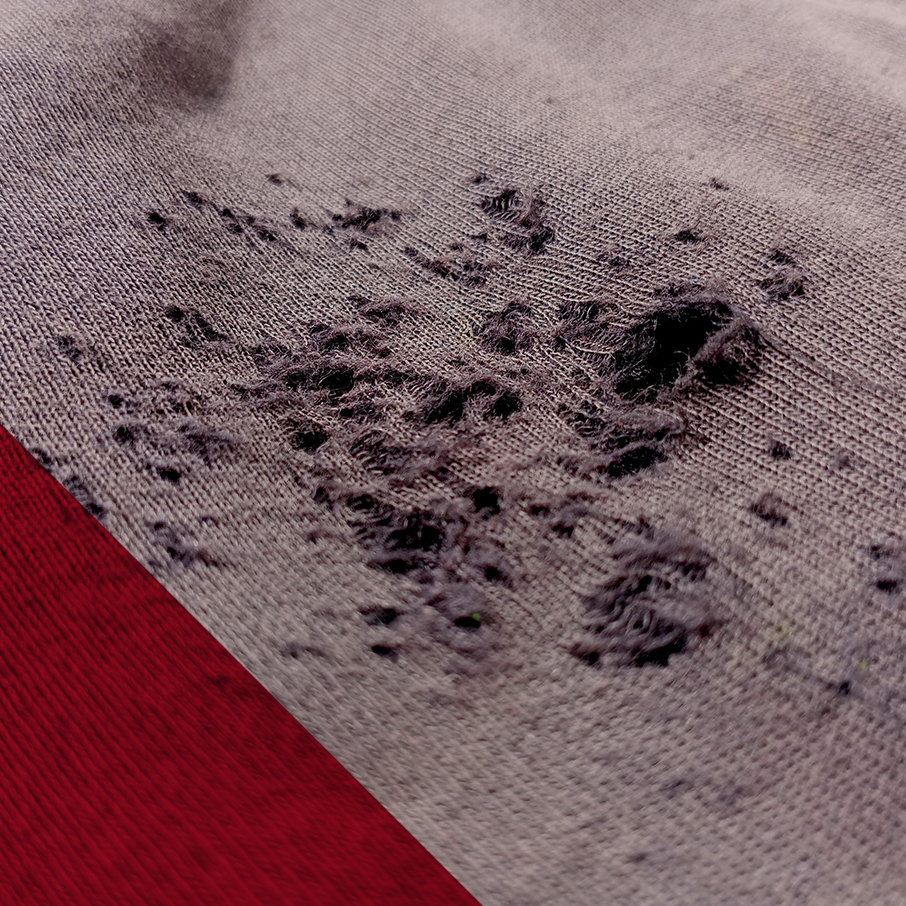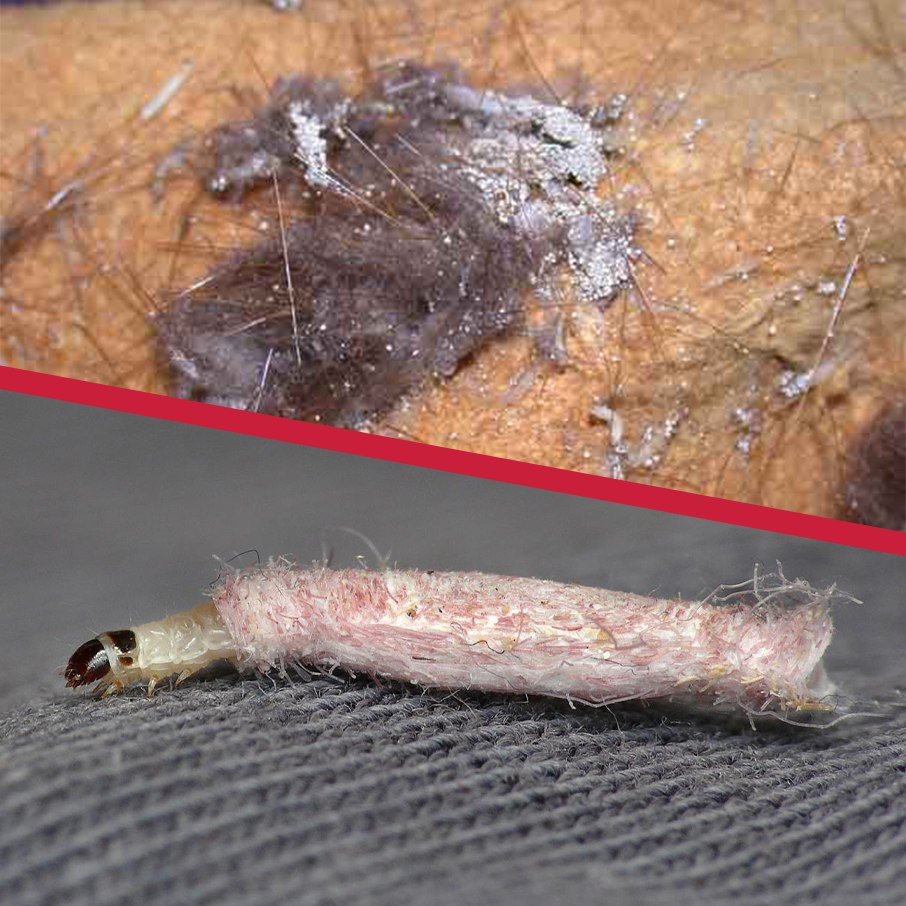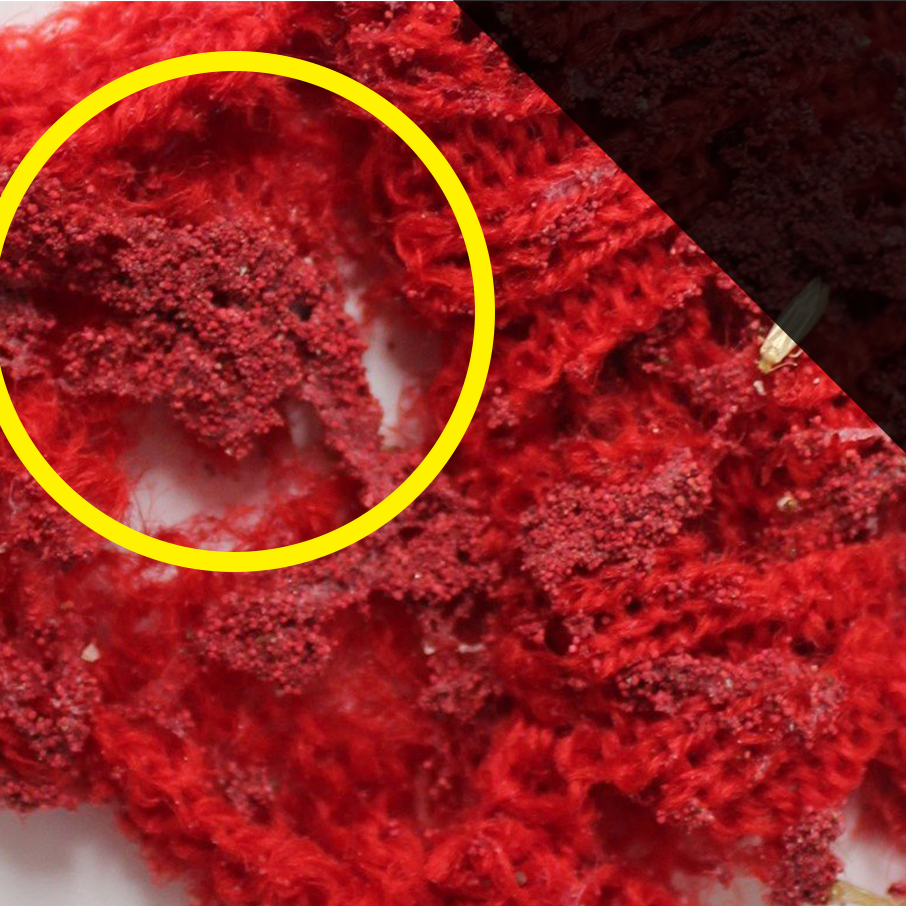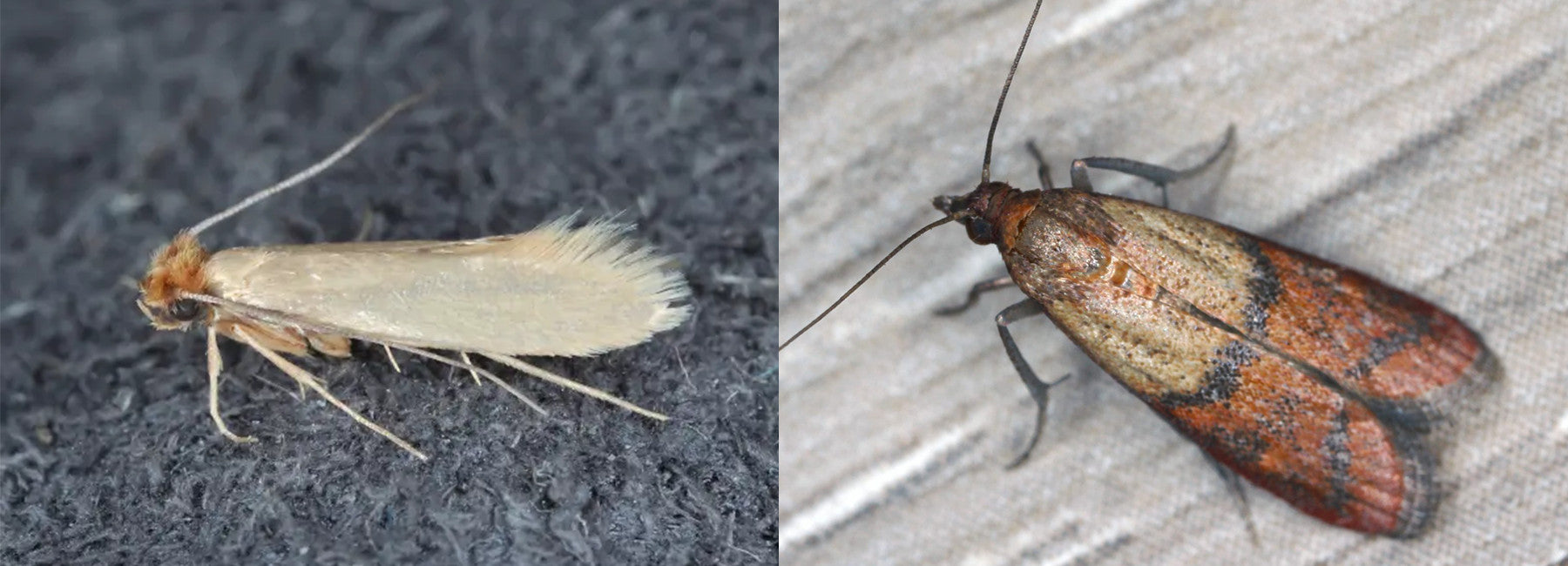
How to Get Rid of Moths.
Identify the Moth, Clean Your Home & Set Traps.

How to Get Rid of Moths.
Identify the Moth, Clean Your Home & Set Traps.
Moths can wreak havoc in your home. Clothes Moth larvae target animal fibers, devouring everything from cashmere sweaters to furniture and curtains, while female Pantry Moths lay eggs in dry food items like grains, cereal, and nuts, leaving them contaminated. Their larvae consume anything nearby, causing even more damage. If you spot signs of a moth infestation, it’s crucial to act quickly and you can shop moth traps here: Catchmaster’s Moth Trap Collection.
The first step to stopping moths is identifying the type of moth you’re dealing with. Adult moths are often the first visible sign, and closer inspection will reveal other telltale clues. This step is critical because Catchmaster’s pheromone-based moth traps are specifically designed to target either Clothes Moths or Pantry Moths. Choosing the right solution is key to regaining control and protecting your home.
Step 1: Identify Your Moth
Appearance
- Indian Meal Moths: Light gray or tan front wings, reddish-brown or bronze back wings; approximately 3/8 inch long with a 1/2-3/4 inch wingspan.
- Mediterranean Meal Moths: Pale gray with dark gray wing markings; smaller than Indian Meal Moths.
- Meal Moths: Brown wings with a distinctive white stripe down the middle.
- Almond Moths: Similar in size to Indian Meal Moths but darker in appearance.
Diet
- Indian Meal Moths & Almond Moths: Feed on grains, cereals, nuts, dried fruits, birdseed, and pet food. Almond Moths also consume
chocolate. - Mediterranean Meal Moths: Favor flour and finely ground, powdery grains.
- Meal Moths: Primarily eat grains and cereals.
Behavior
All pantry moths focus on reproduction during their adult phase, mating near food sources and laying eggs in nutrient-rich foods to ensure larvae have immediate sustenance.
- Indian Meal Moths: Adults are strong fliers often drawn to light sources, while larvae crawl through food, spinning silken webs that clump grains and cereals.
- Mediterranean Meal Moths: Adults are less active fliers than Indian Meal Moths. Larvae crawl and produce heavy webbing in flour and ground grains.
- Meal Moths: Adults are active fliers and drawn to grains and cereals.
- Almond Moths: Active in warmer climates, adults are strong fliers. Larvae crawl through dried fruits and grains, leaving contamination in their wake.
You can learn more about pantry moths in “The Pantry Moth Lifecycle: It’s the Larvae That Do Most Damage.”
Appearance
- Webbing Clothes Moths: Small, golden or light-brown moths, approximately 6-8mm long.
- Case-Bearing Clothes Moths: Slightly smaller, brown moths with distinctive dark spots on their wings.
Diet
- Webbing Clothes Moths: Prefer natural fibers such as wool, silk, and cashmere but are also capable of consuming synthetic-natural blends.
- Case-Bearing Clothes Moths: Favor animal-based fibers like wool, feathers, and down. They may also incorporate cotton into their portable casings.
Behavior
- Webbing Clothes Moths: Spin silky webs or “tunnels” while feeding and can infest not just clothing but also carpets, curtains, and upholstery.
- Case-Bearing Clothes Moths: Create protective, portable casings from the fabric they consume, offering camouflage and mobility.
You can learn more about clothes moths here in: “Do Moths Eat Clothes? A Guide to Protecting Your Wardrobe.”
Step 2: Check Your Food Stores or Clothing & Upholstery
Cleaning After Pantry Moths
A detailed inspection of your food is essential. Carefully examine grains, flour, nuts, dried fruits, and other stored goods for signs of webbing, larvae, or adult moths around or inside the packaging. Transfer any uncontaminated food into tightly sealed containers immediately to protect it. If you notice even the slightest signs of contamination, discard the affected items without hesitation—taking no chances is the best course of action.
After inspecting your food, it’s time to deep clean your pantry. Remove all items and vacuum every corner, crack, and crevice thoroughly. Make sure to dispose of the vacuum bag immediately to prevent re-infestation. Wash all surfaces with hot, soapy water to eliminate any remaining residues or pests. Once the pantry is completely sanitized, place the tightly sealed containers of food back in their spots. Signs of a Pantry Moth infestation include:
Cleaning After Clothes Moths
Start by eliminating their hiding spots. These pests thrive in dark, undisturbed areas, so decluttering your home reduces the places they can lay eggs. Dispose of any clothing you no longer wear, along with any items showing signs of moth damage. For undamaged clothes, wash them in hot water—at least 120°F—to destroy any hidden moth eggs or larvae. For delicate or heirloom items that can’t be washed, seal them in a plastic bag and freeze them for 72 hours to ensure eggs and larvae are eliminated. Signs of Clothes Moth Damage include:
Once your clothing is secure, turn your attention to other fabric-based items in your home, such as curtains, couches, and carpets. Scheduling a professional cleaning service is a smart next step, but in the meantime, vacuum daily. Pay extra attention to corners and hidden areas where larvae might linger. Dispose of the vacuum bag immediately after each use to prevent re-infestation. These proactive steps ensure comprehensive protection against Clothes Moths and their costly damage.
Step 3: Set Pheromone-Based Glue Traps to Kill the Males
The main differences between your glue trap options are:
The Strength of the Pheromone Attractant – Catchmaster’s Pantry and Clothes Moth Traps feature advanced Pheroguard technology, providing the largest catch radius of any moth traps on the market.
The Quality of the Glue – Our traps use Catchmaster’s legendary, professional-grade glue, trusted by pest control experts for over 70 years. With 20% more glue than the competition, it ensures that once pests are caught, they stay caught.
Catchmaster’s moth traps outperform the competition on both these critical capabilities, making them the standard in moth-stopping power. Whether you’re dealing with pantry moths or clothes moths, our traps are designed to effectively eliminate the problem.
Note: Identifying the type of moth infestation is key. The pheromone lures in Pantry Moth Traps are specifically formulated for pantry moths, while Clothes Moth Traps target clothes moths. Using the correct trap ensures optimal results and prevents the infestation from spreading.
Conclusion
Moth problems in your home require precision, not guesswork. The key to successful moth control lies in understanding the unique behaviors of pantry and clothes moths and using the right tools for the job. Catchmaster’s advanced Pheroguard technology and legendary glue formula provide unmatched moth stopping power. Whether you’re targeting pantry moths in your food storage or clothes moths in your closet, our traps are designed to attract, trap, and eliminate these pests effectively. Don’t let a moth infestation ruin your home—take control with Catchmaster and ensure lasting protection.
Key Takeaways
Powerful Attractants: Catchmaster’s Pantry and Clothes Moth Traps feature advanced Pheroguard technology for the largest catch radius on the market.
Professional-Grade Glue: Trusted for over 70 years, our traps use glue that outperforms competitors with 20% more glue, ensuring no chance of escape.
Moth-Specific Solutions: Correct identification of pantry or clothes moths is critical, as each trap’s pheromone lure is tailored to a specific moth type.
Comprehensive Protection: Catchmaster traps eliminate moths effectively, protecting your food, clothing, and home from further damage.
The Catchmaster Standard: Our traps are trusted by professionals for their reliability, ease of use, and superior moth-stopping power.
Take charge of your moth problem today with Catchmaster—the ultimate choice for long-lasting, professional-grade pest control.






